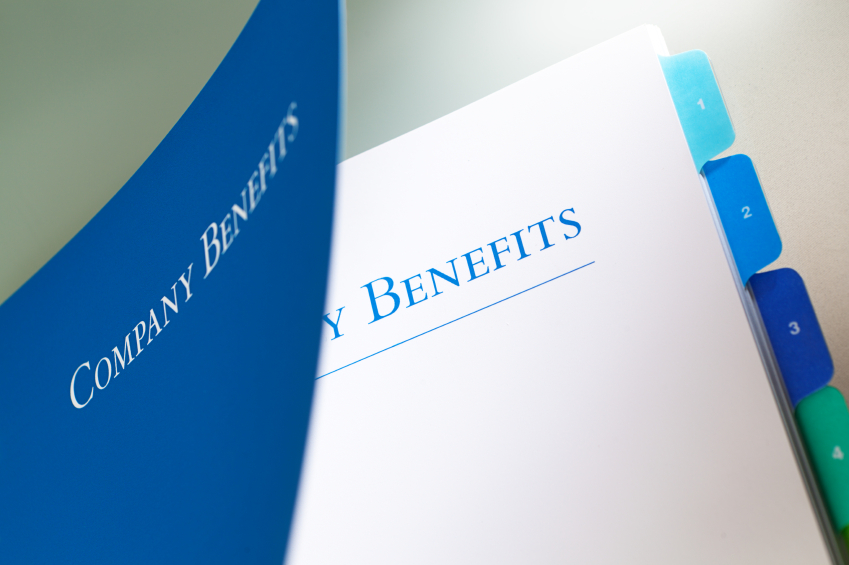 A cafeteria plan is a separate written plan maintained by an employer for employees. A plan is a cafeteria plan if it meets the specific requirements and regulations of Section 125 of the Internal Revenue Service (IRS) Code. Cafeteria plans provide employees who participate the opportunity to receive certain benefits on a pre-tax basis.
A cafeteria plan is a separate written plan maintained by an employer for employees. A plan is a cafeteria plan if it meets the specific requirements and regulations of Section 125 of the Internal Revenue Service (IRS) Code. Cafeteria plans provide employees who participate the opportunity to receive certain benefits on a pre-tax basis.
Cafeteria Plans can be an attractive benefit for employers to offer their employees, and we work with many small business owners who have chosen to offer them.
We recently came across a comprehensive explanation of cafeteria plans. We are including it here on our site, broken into two posts.
If you have questions about cafeteria plans or any small group coverage, please give us a call at 1-800-867-0800 or send us an email at jkatz@vamedicalplans.com. We will be happy to help.
Which Benefits Can be Purchased with “Pre-tax Dollars”?
In general, employer and employee contributions to any cafeteria plan are deductible to the employer, not subject to Social Security tax, and not taxable income to the participant. Thus, available benefits, which can be purchased with “pre-tax dollars,” include:
- health and dental insurance,
- accidental death and dismemberment policies,
- reimbursement for health and dental expenses not covered by insurance,
- dependent care,
- adoption assistance,
- group term life insurance,
- Health Savings Accounts,
- 401(k) deferrals,
- adoption assistance, and
- disability insurance.
Benefits NOT Available Through Cafeteria Plans
- Archer Medical Savings Accounts (MSAs),
- scholarships,
- educational assistance,
- Section 132 fringe benefits
- long-term care insurance and LTC services, (though may be paid from an HSA funded through a cafeteria plan),
- health insurance purchased on an exchange that is not purchased pursuant to an employer’s exchange-purchased group health insurance plan,
- group term insurance for a spouse or dependent, and
- 403(b) elective deferrals.
A plan offering any nonqualified benefit is not a cafeteria plan. If a cafeteria plan fails to operate in compliance with Code Section 125 or fails to satisfy any of the written plan requirements for health FSAs, the plan is not considered a Code Section 125 cafeteria plan, and employees’ election of nontaxable benefits results in gross income to all employees.
What is a Simple Cafeteria Plan?
A simple cafeteria plan is a cafeteria plan adopted by an eligible employer that meets specified contribution, eligibility, and participation requirements. Except for the special rules that apply to the simple cafeteria plan, the plan also must meet the other cafeteria plan rules. Thus, it must be a written plan administered in accordance with the written plan terms. The cafeteria plan must, among other things:
- Be maintained by an employer for employees, and
- Operate in compliance with the Code and regulation requirements as well as the requirements of other applicable laws.
In part, the written plan requirements include the following:
- Describe all benefits.
- Provide rules for eligibility to participate.
- Indicate how employer and employer contributions are made under the plan.
- State the maximum amount of employer and employee elective contributions.
- Describe the procedure for making elections.
- Provide that all elections are irrevocable (except to the extent that the plan includes the “change in status” rules).
- List additional requirements if one of the offerings is a health, dependent care, or adoption assistance FSA.
- State the plan year.
- Provide rules for substantiation of expenses.
- If the plan provides a grace period, it must include required language applicable to the two-and-a-half-month grace period.
- Describe the regulations’ “use it or lose it” rule.
Cafeteria Plans and Highly Compensated Employees
An employer maintaining a cafeteria plan in which any highly compensated employee participates must make sure that both the cafeteria plan and each qualified benefit satisfies the cafeteria plan and benefit-specific nondiscrimination requirements. A failure to satisfy the nondiscrimination rules results in additional taxable income to all employees.
What is the Benefit of a Simple Cafeteria Plan?
Simple cafeteria plans automatically meet all “applicable nondiscrimination requirements,” which are the nondiscrimination requirements of Code Section 125(b) (the 25 percent concentration test) and the nondiscrimination requirements of Code Sections 79(d), 105(h), and 129(d) applicable to group term life insurance, self-insured health benefits (medical expense reimbursement), and dependent care assistance benefits (child care), respectively.
Through an apparent oversight, Code Section 125(j) does not provide an express exception for the health law reform’s health insurance nondiscrimination rules of new Code Section 9815. However, it is likely that if the same insurance options are available to all participants, regardless of their use, the health insurance nondiscrimination rules will be met. The health insurance nondiscrimination regulations, when they are issued, will provide the definitive answer.
Certain benefit-specific nondiscrimination rules continue to apply, such as those for adoption assistance plans because Code Section 137 is not listed in the exemption from the nondiscrimination rules.
Click here for the second part of this post.
Source: Benefits Pro





